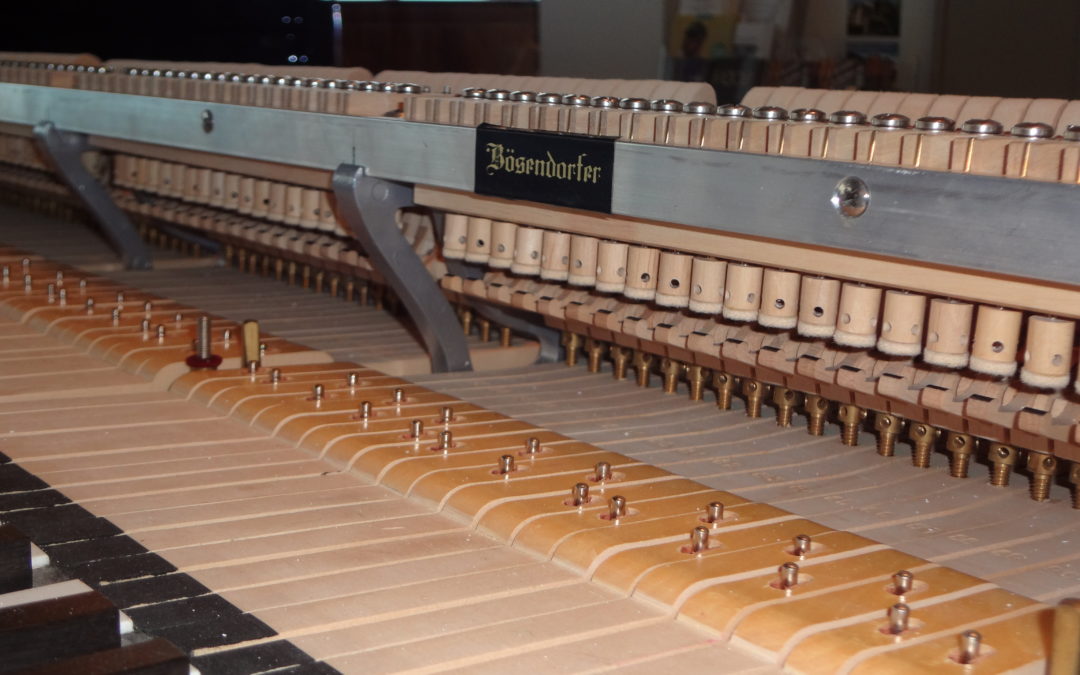Regulation is the art of achieving an even, responsive touch for the entire piano keyboard. There are many steps to a thorough and thoughtful piano regulation.
A properly regulated piano action should have a reasonable and consistent touch sensation, key travel or key-dip of approximately 10mm or slightly less and contribute to a pleasing sound color or timbre as the hammers reach the strings. Many details contribute to an even and responsive touch sensation. Among the steps involved in the process of regulation are:
- Evaluation of current or existing responsiveness and tone prior to any changes being made
- Preparation of the keyframe
- Friction reduction
- Necessary repairs, including replacement of key bushings, keyframe cleaning and lubrication, and any parts replacement that may be needed
- Hammer shaping, spacing to strings and travel
- Determination of key height
- Key leveling
- Hammer to string distance (blow distance) Alignment of all interactive components Responsive repetition spring tension
- Key travel or dip
- Repetition lever height
- Jack position relative to the knuckle Let-off and drop limits (distances)
- Even checking (backchecks)
The keyframe must be removed from the key bed for work to be done. The major component known as the action stack is removed from the keyframe and keys are individually removed. The keyframe is cleaned of tarnish or corrosion on front and center rail key pins. Wood frame components are dry brushed and vacuumed, then cleaned with denatured alcohol. Dry film lubricant is applied to the key pins. Cloth and paper leveling punchings may be removed and replaced at this time.
Piano keys have inserts called bushings which are made of cloth and are glued to mortise shoulders inside the keys at the front and inside a button on top of the keys at the center. If the bushings are worn, excessive side-to-side motion may be detected at the keys. If so, we suggest replacement of the cloth bushings. With keys re-bushed and installed back onto the keyframe an appropriate key height is set. Key height is not a set spec, but a sensible choice made by discerning the relationship of the front of the key face to the key slip, and the top of the keys to the underside of the fallboard. The front and center rail key pins are also an important consideration. A general rule of thumb is to have the front rail key pin rest into the front key mortise, and the balance or center rail key pin extend through the
top of the center rail key button approximately 3/16″. This is how we determine the best key height.
Even touch sensation among all keys, smooth and true hammer travel to the string, an appropriate sense of aftertouch, and improved tone quality are the goals of piano action regulation.
Jeffrey Cappelli, RPT


